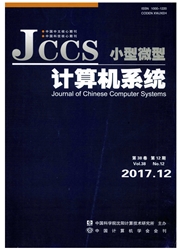

 中文摘要:
中文摘要:
固态驱动器(SSD)读写性能优越,但成本高,因此在实践中人们往往利用SSD和普通硬盘(HDD)构建混合存储系统以获取较高的性价比.在混合存储系统中,如何使更多的IO请求能够命中SSD是充分利用SSD性能的关键.针对多任务共享存储环境下集中访问和随机访问IO存取模式并存,且通常情况下IO工作流大部分请求相对集中于有限区域内的特点,本文提出一种基于热区跟踪(HZT)的缓存替换算法.HZT算法充分考虑了IO工作流的空间局部性和时间局部性,利用IO工作流的历史访问信息,跟踪当前热区,并为热区数据块赋予更高的驻留SSD的优先级,能够有效提高混合存储中SSD缓存的命中率.经测试,在典型多任务共享存储环境下HZT算法可以使SSD缓存的命中率比使用LRU(Least Recently Used)算法的系统提高12%.采用适当的预取策略,该算法的命中率与LRU算法相比可获得23%的提升.
 英文摘要:
英文摘要:
The read and write performance of Solid State Drive(SSD) is superior,but the cost is very high.Therefore,it becomes practical to construct hybrid storage system with SSD and hard disk drive(HDD) to obtain higher cost-performance ratio.In such a hybrid storage system,making more IO requests hit the data on SSD is a key point to take full advantage of SSD.Based on our observation that concentrated access pattern and random access pattern coexist in shared storage environment and in most cases nearly all IO requests concentrate in limited space,we put forward a new cache replacement algorithm called HZT.HZT algorithm defines the concept of hot zone and utilizes the history of IO requests to trace current hot zones.In addition,data blocks in hot zones are assigned to a high priority,meaning they can stay in SSD without being replaced whenever possible.Such a way takes full account of spatial locality and temporal locality of IO workload in hybrid storage system and therefore,can improve the hit rate of SSD buffer efficiently in shared storage environments.The experimental results show that HZT algorithm can achieve 12% more hit rate of SSD buffer than LRU(Least Recently Used) algorithm.When combined with appropriate prefetching strategy,the hit rate of HZT algorithm can be improved by 23% than that of LRU algorithm.
 同期刊论文项目
同期刊论文项目
 同项目期刊论文
同项目期刊论文
 期刊信息
期刊信息
